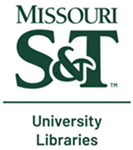Use Of Rotating Membranes For Air-to-liquid Mass Transfer Of Carbon Dioxide To Enhance Algal Growth
Abstract
A novel air-to-liquid mass transfer system using wetted rotating membranes was designed to enhance air-to-liquid carbon dioxide (CO2) mass transfer efficiency. Traditional methods, such as sparging, are energy-intensive, but the rotating membrane reduces energy demands by optimising membrane wetting via rotational motion. Experimental tests were conducted using a small-scale system with a membrane width of 0.64 m and loop size of 2 to 5 m, with rotational speeds between 0.0 and 0.78 m/s. CO2 flux increased by up to 45%, achieving maximum uptake rate of 9.14 mg CO2/min/m2 at 100% speed. An empirical model was developed to predict mass transfer rates under varying operational conditions, and model validation showed a strong correlation with experimental data (R2 = 0.9668). Preliminary techno-economic analysis estimated that scaling the system to meet the CO2 demands of a hypothetical 500,000 L raceway, 915 membranes would be required, utilising ∼223 m2 (13.4%) of 1667 m2 surface area, assuming a 0.3 m depth, 12 g/m2/day growth rate, and algae with 50% carbon by weight. The system's energy consumption was measured at 17.1 J/g CO2 captured, representing a 90% reduction in power usage compared to conventional sparging systems, which typically require ∼627 W per 8.3 m2 of membrane surface area. Based solely on electricity costs of $0.10/kW-hr, the cost of capturing atmospheric CO2 was estimated at $1550 per ton. This marks a significant improvement over existing technologies, enhancing commercial viability. Future work will validate the system with Chlorella vulgaris and scale to optimise CO2 capture and reduce costs.
Recommended Citation
P. O. Obidi et al., "Use Of Rotating Membranes For Air-to-liquid Mass Transfer Of Carbon Dioxide To Enhance Algal Growth," Environmental Technology (United Kingdom), Taylor and Francis Group; Taylor and Francis, Jan 2025.
The definitive version is available at https://doi.org/10.1080/09593330.2024.2445328
Department(s)
Mechanical and Aerospace Engineering
Keywords and Phrases
Algal growth; carbon dioxide capture; mass transfer; techno-economic analysis; wetted rotating membranes
International Standard Serial Number (ISSN)
1479-487X; 0959-3330
Document Type
Article - Journal
Document Version
Citation
File Type
text
Language(s)
English
Rights
© 2025 Taylor and Francis Group; Taylor and Francis, All rights reserved.
Publication Date
01 Jan 2025


